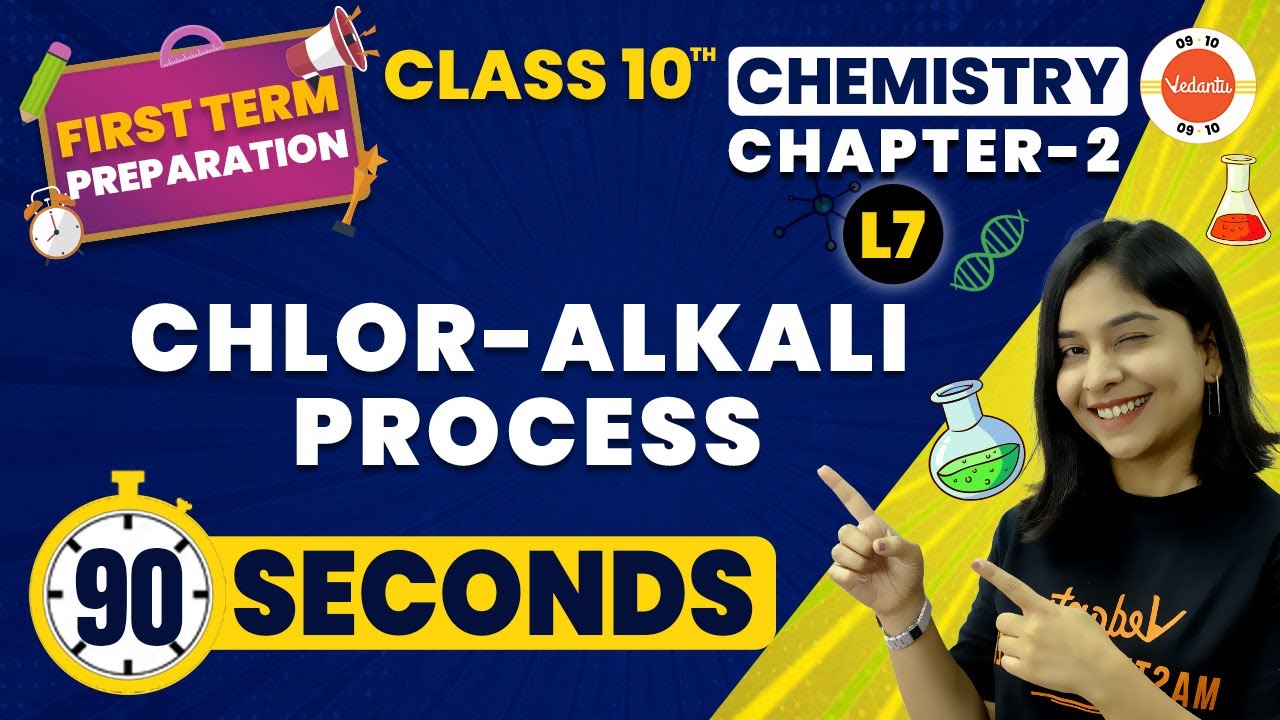Electrolysis of Copper Chloride solution National 5
Summary
TLDRIn this electrolysis experiment, copper and chloride ions are separated using electricity. A 12-volt DC power supply is used, with one electrode continuously positive and the other negative. Carbon electrodes are attached to the power supply, and copper chloride solution is added to the beaker. Upon turning on the power, chlorine gas forms at the positive electrode, confirmed by its bleaching effect on moist blue litmus paper. At the negative electrode, copper solidifies as copper ions gain electrons. The experiment demonstrates the separation of ions through electrolysis.
Takeaways
- ⚡ This is an electrolysis experiment using electricity to separate copper and chloride ions.
- 🔋 The power supply is set at 12 volts with direct current (DC) where one electrode is positive and the other is negative.
- 🔴 The red wire is attached to the positive terminal, while the black wire is attached to the negative terminal.
- 🔗 Carbon electrodes are used, and they are held in place using crocodile clips connected to the wires.
- 💧 A blue copper chloride solution is added to the beaker, where copper ions give the solution its blue color.
- 🌬️ At the positive electrode, bubbles of gas are formed, which is identified as chlorine gas.
- 📜 Chlorine gas bleaches moist blue litmus paper, confirming its presence, and emits a characteristic smell.
- 🔨 At the negative electrode, a solid starts to form, which is identified as copper metal.
- 🔄 Copper ions (positive) are attracted to the negative electrode where they gain electrons and form copper atoms.
- 🧪 This experiment demonstrates how electricity can be used to separate ions and form new substances at electrodes.
Q & A
What is the main purpose of the experiment described in the script?
-The main purpose of the experiment is to use electricity (electrolysis) to separate copper and chloride ions from a copper chloride solution.
What is the role of the DC power supply in the experiment?
-The DC power supply provides a constant direct current that makes one electrode positive and the other negative, allowing the separation of ions through electrolysis.
What are the two types of electrodes used, and how are they connected to the power supply?
-Carbon electrodes are used. The black wire connects the negative terminal of the power supply to the negative electrode, while the red wire connects the positive terminal to the positive electrode.
Why is the copper chloride solution blue in color?
-The blue color of the copper chloride solution is due to the presence of copper ions, which impart a blue hue to the solution.
What happens at the positive electrode during the experiment?
-At the positive electrode, chlorine gas is formed, which can be confirmed by observing gas bubbles and testing with moist blue litmus paper that gets bleached.
How is chlorine gas confirmed to be present in the experiment?
-Chlorine gas is confirmed by holding moist blue litmus paper above the positive electrode, which bleaches the paper, and by the characteristic chlorine smell.
What happens at the negative electrode during the experiment?
-At the negative electrode, a solid copper forms as the positive copper ions are attracted to the negative electrode and gain electrons, turning into copper atoms.
Why does the copper form on the negative electrode?
-Copper forms on the negative electrode because the positively charged copper ions in the solution are attracted to the negatively charged electrode and gain electrons to become neutral copper atoms.
What voltage is the power supply set to for this experiment?
-The power supply is set to 12 volts for the experiment.
What observable changes indicate the electrolysis process is occurring?
-The observable changes include the formation of gas bubbles at the positive electrode, the bleaching of litmus paper confirming chlorine gas, and the deposition of copper on the negative electrode.
Outlines

Cette section est réservée aux utilisateurs payants. Améliorez votre compte pour accéder à cette section.
Améliorer maintenantMindmap

Cette section est réservée aux utilisateurs payants. Améliorez votre compte pour accéder à cette section.
Améliorer maintenantKeywords

Cette section est réservée aux utilisateurs payants. Améliorez votre compte pour accéder à cette section.
Améliorer maintenantHighlights

Cette section est réservée aux utilisateurs payants. Améliorez votre compte pour accéder à cette section.
Améliorer maintenantTranscripts

Cette section est réservée aux utilisateurs payants. Améliorez votre compte pour accéder à cette section.
Améliorer maintenantVoir Plus de Vidéos Connexes

GCSE Chemistry - Electrolysis Part 3 - Aqueous Solutions #42

Properties of Ionic Substances | Properties of Matter | Chemistry | FuseSchool

4. Electrochemistry (Part 3) (3/3) (Cambridge IGCSE Chemistry 0620 for 2023, 2024 & 2025)

The Flame Test Experiment- The Chemistry of Colorful Flames

Animasi Prinsip Kerja Sel Elektrolisis

Chlor Alkali Process One Shot in 90 Seconds | Acids Bases and Salts | NCERT Class 10 Chemistry Ch-2
5.0 / 5 (0 votes)
